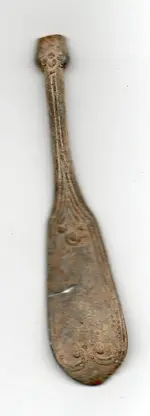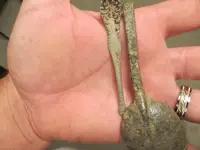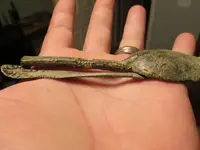castletonking
Full Member
- Joined
- Jun 20, 2011
- Messages
- 245
- Reaction score
- 16
- Golden Thread
- 0
- Location
- castleton vt.
- Primary Interest:
- Metal Detecting
I was back at the spot i found the large cent,the reale and the indian head as well as many spoon bowls and i found my first knife,unfortunately it is paper than and seems to be carbonized,whats left of the solid portion is black and seemingly crystalized(how old does metal need to be to do that?).but the reason i'm writing is ive found a pewter(?) spoon handle,my first ever.it has a hallmark,but i can only make out the first 3 letters xzw theres something else then an I and something that cant be read.i was hoping that someone can identify the pattern and possibly give me a ball park age.the quality of the pictures is the absolute best i can do,sorry





 Yours looks to be at the end of the time period with the design on it.
Yours looks to be at the end of the time period with the design on it.


